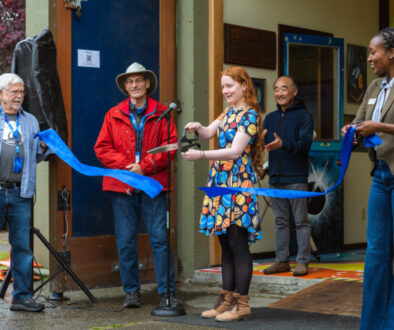Vera Rubin Observatory: Astronomy’s New Workhorse
Above is the building of the Vera C. Rubin Observatory on Cerro Pachón in northern Chile. The telescope sits in the cylindrical dome on the upper right; the control room, offices, and the coating plant are located in the multi-story left part of the building. Credit: Govert Schilling
Since the early 21st century, Cerro Pachón, a 2,700-meter (8,900-foot) mountain in Chile, has been home to NOIRLab’s 8.1-meter Gemini South Telescope and the 4.1-meter Southern Astrophysical Research (SOAR) Telescope. But over the past decade, a third facility has been erected here, named after dark matter pioneer Vera C. Rubin. Later this year, the huge 8.4-meter instrument will start a massive 10-year survey of the sky, hunting for transient phenomena and producing a 3D map of the universe (see the June 2024 issue of Sky & Telescope). “We’ve experienced a number of delays, partly due to the Covid pandemic,” says Opazo, “but I’m absolutely certain that first light will be achieved this year.”
The unusual but elegant design of the 10-story observatory building minimizes air turbulence that might affect the observations. I don’t see an official entrance or reception; instead, Opazo takes me through a metal door, next to a small plaque commemorating the primera piedra — the laying of the first stone in April 2015. Before long, we’re entering a huge area that looks like a factory hall.
Actually, it is a factory hall: This is the coating plant, where Vera Rubin’s giant primary mirror will receive a new layer of reflecting silver every two years or so. (To do so, the mirror will first have to be lifted out of the telescope and lowered to the building’s ground level in a 10-meter-wide elevator.) The same coating facility is used for the instrument’s secondary mirror, which has a diameter of 3.4 meters — the largest convex mirror ever made.
(Source: skyandtelescope.org)




